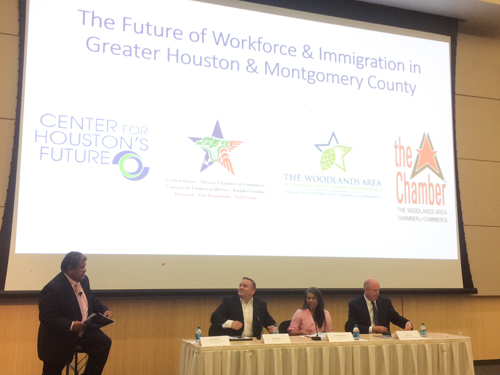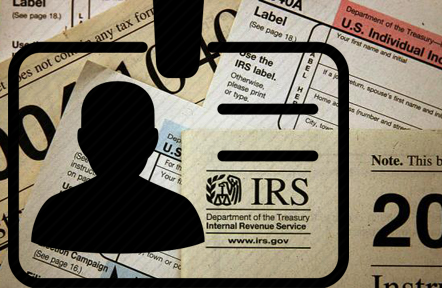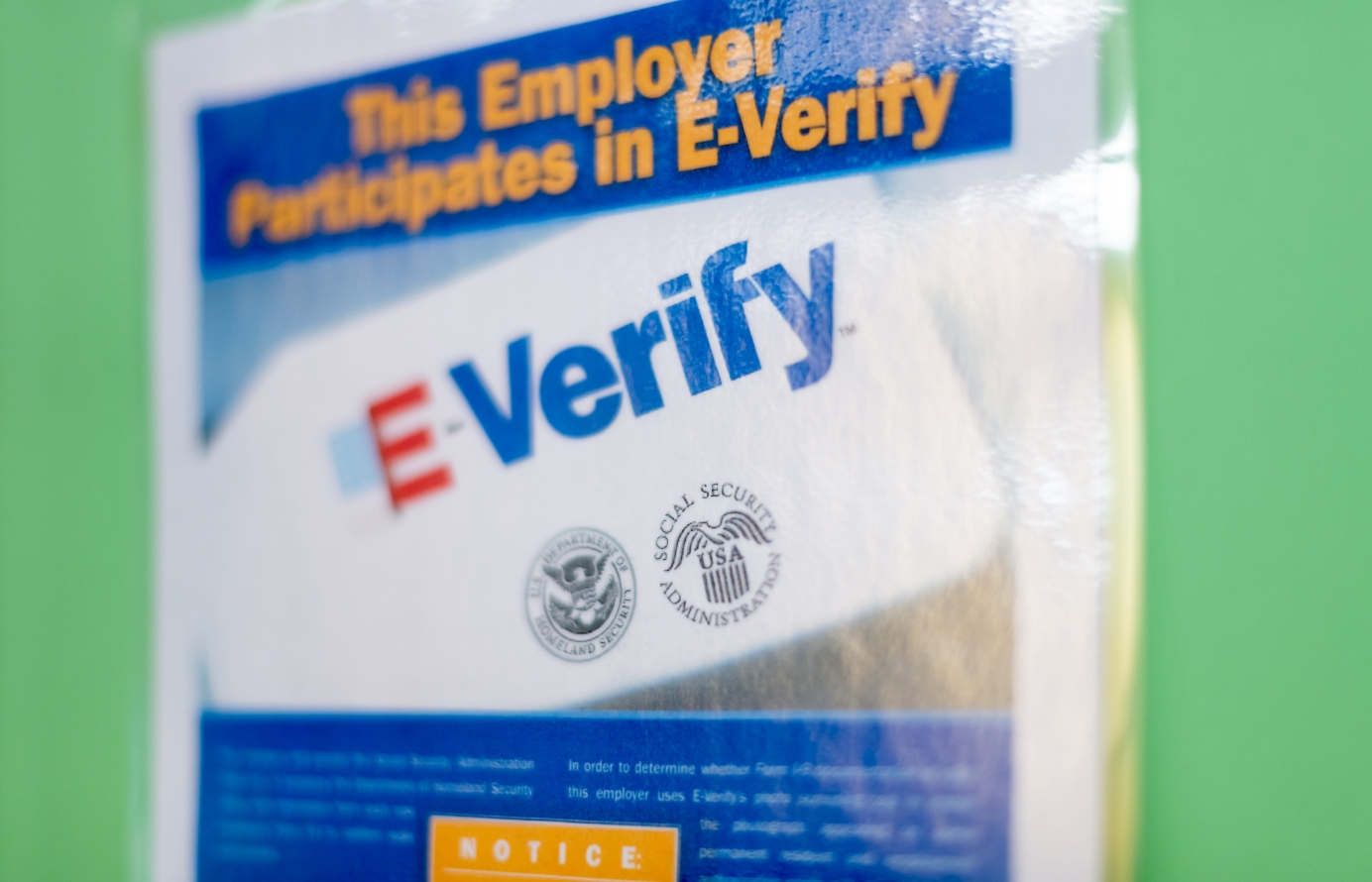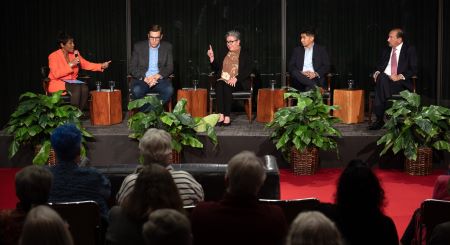The Future of Immigration and Workforce in Greater Houston and Montgomery County
 Business leaders attended a program to learn about and discuss the future of workforce and immigration in greater Houston and Montgomery County in The Woodlands last week. Data presented by experts revealed the critical and complementary role that immigrants play in the local workforce, and business executives in attendance echoed the case made by a Rational Middle of Immigration video for improving the H1-B visa system to increase Texas’ and the US’ economic competitiveness.
Business leaders attended a program to learn about and discuss the future of workforce and immigration in greater Houston and Montgomery County in The Woodlands last week. Data presented by experts revealed the critical and complementary role that immigrants play in the local workforce, and business executives in attendance echoed the case made by a Rational Middle of Immigration video for improving the H1-B visa system to increase Texas’ and the US’ economic competitiveness.
Studies and statistics highlighting the economic impact of immigration in Houston were presented by Brett Perlman, President and CEO of the Center for Houston’s Future.
Perlman explained that immigration is going to affect the Houston region more than anywhere else in the country because more immigrants will move there in the next 20 years than anywhere else. He also highlighted the key role that immigrants play in Houston’s workforce, stating that although immigrants make up 23% of region’s population, they work at a higher rate than natives, holding 29% of the region's jobs. This is due in part to the fact that in Houston, 74.5% of immigrants are working age compared to 49.5% Native born Americans.
Highlighting the valuable role that highly-skilled immigrants play in Houston’s workforce, Perlman noted that they make up 42% of doctors, 43% of scientists, and 42% of petroleum engineers. He explained that according to their study, immigrants will drive employment growth in Houston in the coming years because natives are not having enough children, and that in 2036, immigrants will make up 43% of Houston’s workforce compared to 30.6% in 2016.
Perlman went on to reveal the results of a study that predicted the effects of three different immigration scenarios on Houston’s GDP in 2036. If immigration is decreased by 30%, then Houston would lose $51 billion in GDP. If all undocumented immigrants are deported, then Houston would lose $36 billion in GDP. However, if immigration is increased by 30%, then Houston would gain $67 billion in GDP. Although these immigration scenarios are hypothetical, they reveal the significantly positive economic impact that immigrants have on Houston’s economy.
Dan Wallace, Director of Special Projects with New American Economy, presented data on the economic impact of immigrants in Texas Congressional District 8, which includes, Montgomery, Walker, Houston, Trinity, San Jacinto, and parts of Grimes and Madison Counties. Wallace revealed that the ~95,000 immigrants in district paid about $240 million in state taxes and $500 million in federal taxes last year, leaving them with about $2.6 billion in spending power to stimulate the local economy.
Wallace also highlighted the key role that immigrants play in filling gaps in the district’s workforce due to their complementary levels of educational attainment compared to native-born residents.
While the 8th Congressional District is relatively lacking in percentage of native-born residents with less than high school degrees at 9.4%, 39% of immigrants in the district have less than a high school degree, which helps meet demands for lower-skill labor.
Additionally, while in the district, 9.1% of native-born Americans have a graduate degree or higher, 11.9% of the immigrants have graduate degree or higher, which helps meet a demand for high-skilled labor.
However, at levels of educational attainment in which there are higher percentages of native born Americans in the district, high school and some college (61.3%), and Bachelor’s degree (20.1%), there are significantly lower percentages for immigrants (32.8% and 16.3% respectively).
As so, it appears that in TX-8 immigrants are largely working jobs for which there is a lack of native-born Americans to fill. This may be due in part to the higher willingness of immigrants to move places where their skills and work are higher in demand. According to Wallace, this complementary dynamic of educational attainment levels between native-born Americans and immigrants is largely true across America.
Stan Marek, CEO of MAREK, discussed the critical role that immigrant workers play in the Texas construction industry that is currently being negatively impacted by a shortage of workers. “We were busy before Hurricane Harvey, and now there’s such a labor shortage,” he said.
Marek then presented a video “Understanding H-1B: America’s Skilled Worker Visa,” which is part of the Rational Middle:Immigration documentary video series that he has helped produce.
The video explored the history of the high skill visa and the challenges it faces going forward.
In the video, President Trump calls for more high-skilled visas and allowing more high-skilled immigrants to come to America and stay. “We need highly skilled people in this country…One of the problems we have is people come and go to our best colleges…and get shoved out…We absolutely have to be able to keep the brain power in this country…There’s so many things that everybody agrees to and it doesn’t get done…Let them stay, let them build their homes here, let them build the businesses here, these are amazing people and we force them to leave. We’re going to lose our edge in Silicon valley because some of the greatest minds that we’re educating are now going to other countries and they’re going to be competing against us. We don’t want that,” said President Trump.
Dr. Tony Payan, Françoise and Edward Djerejian Fellow for Mexico Studies and Director of The Baker Institute’s Mexico Center, said an ideal immigration system would be “flexible, and the number of visas would not be fixed but rather moved as the economy performs. If the economy is performing well and there’s a certain number of skills that you need then you increase that number of visas. If the economy tanks, then you lower the number of visas available.”
Following the video, Marek stressed the economic importance of looking at the facts and the need for immigration reform. “It’s certainly a polarizing issue. What we try to do with these videos is just present the rational middle and the facts,” he said. “Right now our politicians on either side will not even touch the issue, and it’s going to hurt Texas more than any other state,” he said, adding that SB4, the “show me your papers” law the Texas legislature passed last session has pushed away both legal and undocumented immigrant workers to places like Denver and California that are more immigrant friendly. He encouraged the audience to share the rational middle videos and contact their lawmakers about immigration reform.
Gil Staley, CEO of The Woodlands Area Economic Development Partnership, gave some comments after the presentations about how immigrants can help meet workforce needs in The Woodlands. “I loved the facts and the statistics that were pointed out that are so important to understanding the impact that immigration has on our workforce…Unemployment here is probably below 3% and we don’t have enough workers to fill the open jobs that we have, that’s the reality…We see it and we realize it every single day that immigrants play such a critical role in this community,” he said. “A workforce that can contribute to our economy is important to this community…I know it’s a polarizing issue, but I love the fact that they call it The Rational Middle because both sides need to realize how important this is to our economy, and I don’t want us to lose out to our competitors that are more welcoming. I’m very much in favor of being able to hire the most qualified workers we can find,” he added.








